|
|
|
| |
|
|
|
|
| |
|
|
|
|
Griffin & George 2
Stainless steel, vintage 'Bakelite' analytical balance platform, found stone
2011 (20 h x 46 x 30cm) |
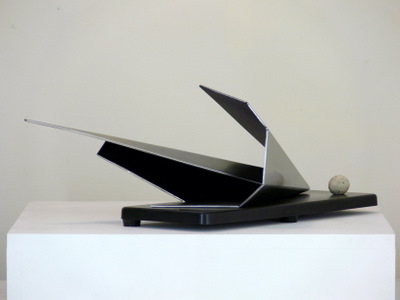 |
|
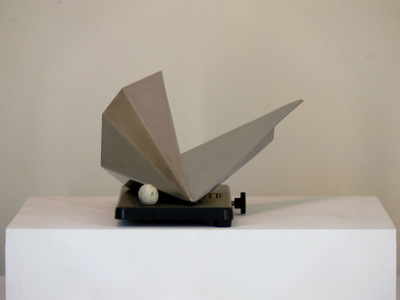 |
| |
|
|
|
|
A cabinet of curiosities is an encyclopaedic collection of objects whose categorical boundaries are yet to be defined. These, often faked, objects belong to the world of natural history, geology, ethnography, archaeology, religious and historical relics, works of art and antiquities. These Kunstkammer were regarded as microcosms of the theatre of the world, a theatre of recollection and memory, a symbolic control of the natural world through its miniature reproduction.
This sculpture is one of a series that recalls objects from a Kunstkammer – a displayed specimen of a strange amalgamation of the natural with the man-made. The metallic remains of some marine biota rest on parts of scientific instrumentation (an analytical balance base made from Bakelite, an early plastic, by the Griffin & George company) in association with a found natural object – a 'take' on the sort of faked 'natural artefact' made famous by the Kunstkammer of the post-Renaissance. |
| |
|
|
|
|
Alter ego
Stainless steel, mdf, clear acrylic sheet
2011 (53 h x 50 x 26cm) |
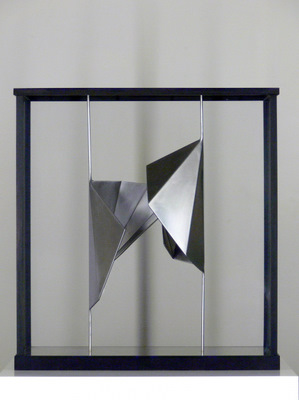 |
|
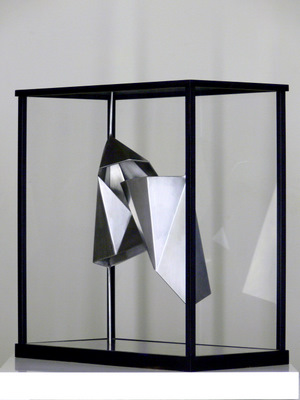 |
| |
|
|
|
|
| |
|
|
|
|
Case5 - Rotule: Rotula novahollandia
Stainless steel, glass, mdf and nickel and black chrome electroplated steel
2010 (86 x 73 x 53cm) |
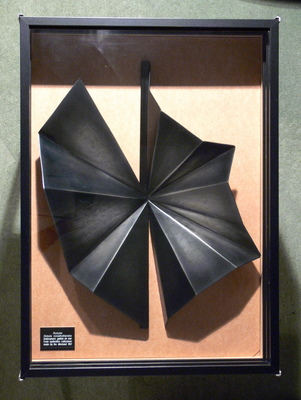 |
|
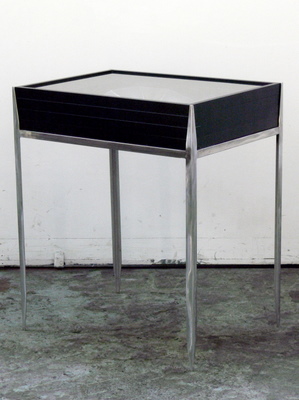 |
| |
|
|
|
|
| |
|
|
|
|
Case6 - Small Gatherers: Chelicerata acari
Stainless steel, glass, mdf and nickel electroplated steel
2010 (91 x 53 x 53cm) |
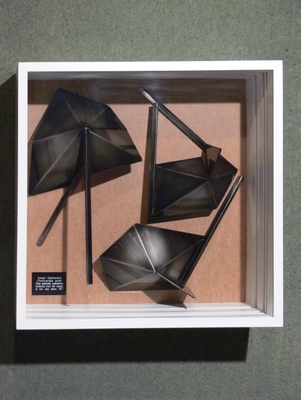 |
|
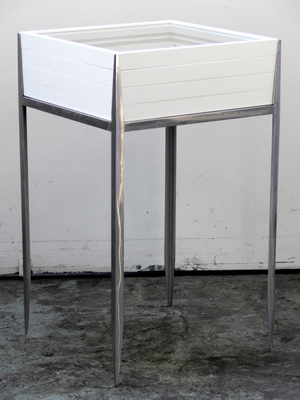 |
| |
|
|
|
|
| |
|
|
|
|
Wanderers in the Sea of Ice
Stainless steel, nickel and black chrome electroplated steel
2011 (87 x 56 x 54cm) |
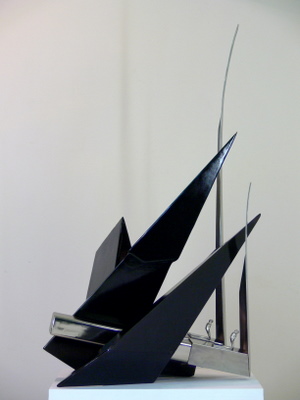 |
|
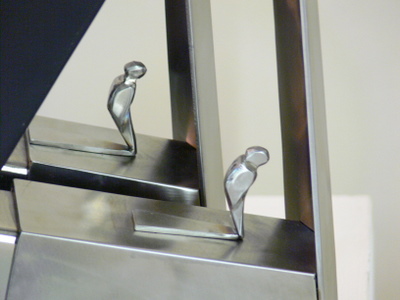 |
| |
|
|
|
|
Wanderers in the Sea of Ice is a work created in response to the 19th Century Sublime art movement, and is inspired by Caspar Freidrich's paintings: The Sea of Ice and Wanderer Above the Sea of Fog. |
| |
|
|
|
|
Mutatis mutandis
Stainless steel, copper-electroplated stainless steel, mahogany, glass, felt
2011 (35 h x 58 x 41cm) |
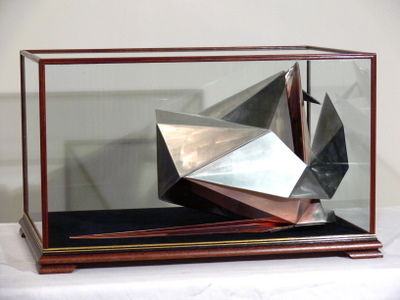 |
|
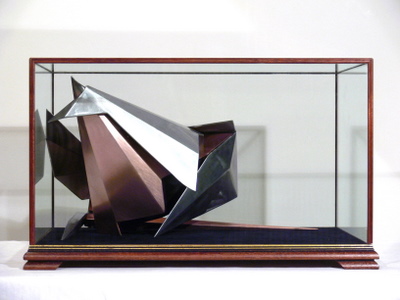 |
| |
|
|
|
|
| |
A cabinet of curiosities is an encyclopaedic collection of objects whose categorical boundaries are yet to be defined. These, often faked, objects belong to the world of natural history, geology, ethnography and relics, works of art and antiquities. Kunstkammer are microcosms of the 'theatre of the world', of recollections and of memory. A 'memory theatre' which addresses the nexus of science, industry, society, time and place and symbolically conveys the artist's control of the world through its indoor, microcosmic reproduction of that world.
These works are largely directly related to vintage science and scientific discoveries, the melding of old scientific instrumentation and museum display cases with biological artefacts represented in abstract steel. Mixed-in with these cases and Kunstkammer relics are bubble-wrapped objects awaiting unpacking and display, or maybe wrapped ready for removal to another space.
Some pieces inhabit a museum display case or aquarium (see related web page) – unknown life-forms collected by an exploratory or scientific research vessel from the distant past, its taxonomy alluding to the nature of the thing inside and the remarkable journey made by the (real) ship. These are the sort of things one might still find when searching through the cellars and warehouses of a museum or an old industrial site where they might have been left when the building was abandoned, and bring us face-to-face with a now lost world of science and discovery.
Others are associated with vintage scientific instrumentation from the early part of the last century (see related web page) – for example, encrusting curious brass balances in rebuilt mahogany cabinets. Explicitly creating a microcosmic theatre of the world through symbiotically combining intact industrial and scientific objects and equipment with fabricated biota – strange constructs made through the fabrication and manipulation of objects and materials. An evolving inhabitation of the objects and equipment. A displayed specimen of a strange amalgamation of the natural with the man-made. The metallic remains of some biota resting on parts of vintage scientific instrumentation, in association with a found natural object. A 'take' on the sort of faked 'natural artefacts' made famous by the original Kunstkammer. |
|
| |
|
|
|
|
| |
|
|
|
|
|